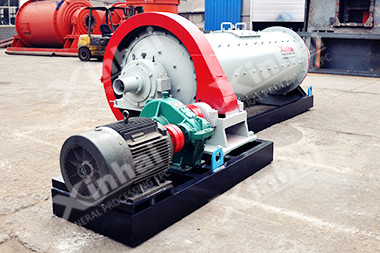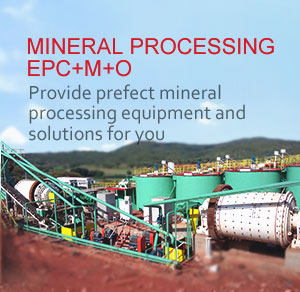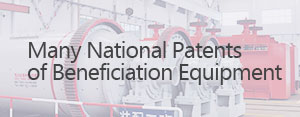- Home
- About
-
Mineral Processing EPC+M+O

Providing optimized solutions for your mine, one-stop service for mineral processing plant!
View details -
Product
- Grinding
- Classifying
Grinding & Classifying
- Flotation
- Gravity Separation Equipment
- Magnetic Equipment
- Gold Extraction Equipment
- Washing Equipment
Separating Process
- Thickening
- Dewatering Machine
Thickening & Dewatering
- Accessories
- Auxiliary Product
Consumables

Xinhai mineral processing equipment mainly include: grinding equipment, flotation equipment, dewatering equipment, magnetic separation equipment, and so on. Some of the equipment is Xinhai independent research and development, and has been awarded national patent. View details
-
Solutions
- Gold Tailings
- Tailings
Tailings

Gold CIP Production Line adsorbs gold from cyaniding pulp by active carbon including 7 steps: leaching pulp preparation, cyaniding leaching, carbon adsorption, gold loaded carbon desorption, pregnant solution electrodeposit, carbon acid regeneration, leaching pulp. View details
- Case
-
News
- Contact
Home Xinhai News The introduction of common mineral processing methods
The introduction of common mineral processing methods
2014-11-03 XinHai Views (2907)A variety of ores may need different mineral processing methods. Customers have little knowledge about that. As a result, Xinhai Mining Machinery Co., Ltd. will introduce some detailed beneficiation methods for all customers. In terms of different ores, mineral processing methods are different. Thus, we need know the characteristics of ores, and then the method can be assured.
This method can be widely applied to processing coal, nonferrous metal, rare metals, noble metals, asbestos, adamas and other nonmetallic minerals. Gravity concentration can process various metals according to the differences of relative density. Such minerals with different density can produce appropriate loose layer and separation condition by action of fluid force and various mechanical forces in the movable media(water, air and heavy-fluid). Sometimes, a spiral chute, centrifugal machine, cyclone can be used for strengthening the separation of fine materials. The production line is divided into crushing, screening, grinding, classification, flotation, dewatering and tailings disposal.
2.Flotation process
Flotation is a process of separating minerals by differences of physical and chemical properties, which is widely used for separating sulfide minerals( gold ore, silver ore, galena, sphalerite, chalcopyrite, chalcocite, molybdenite), metals and oxide minerals(uranium deposit),etc. Some metals should be processed with a flotation method, such as copper, lead, zinc and molybdenum, etc. Furthermore, some ferrous metals, rare metals and nonmetallic minerals can be also available for flotation. According to the differences of physical and chemical properties of minerals, valued minerals can attach to the foams with flotation reagent, so that separation can be realized.
Flotation is suitable for processing fine particles and minute materials, so minute particles with less than 10μm can be recovered. The whole production line can be divided into crushing & screening, grinding & classification, flotation, dehydration & drying of concentrate and treatment of tailings.
3.Magnetic separation
Magnetic separation is mainly used for screening ferrous metals(iron, manganese, and chrome), nonferrous metals and rare metals. The whole process contains: ores after crushed in the crusher are conveyed to vibrating screen for screening and then to grinding and classification equipment for fine grinding. Minerals separated from gangue enter magnetic separation equipment for concentrate. Its working principle is that after grinding and classification, screened products are conveyed by a belt conveyor to next magnetic separating stage for the qualified fineness. Then minerals are conveyed to the permanent magnetic dewatering tank for concentrate and then concentrate will enter permanent magnetic drum for a second magnetic separation. The concentrate after filtration and drying are conveyed to warehouse for storage.
Yantai Xinhai company can provide a variety of mineral processing production line in line with different characteristics of ores. We can offer excellent service for customers.
Introduction of common crushing equipment
Along with the development of science and technology, a variety of new high-efficiency crushing equipment mushrooms and has been widely used. However, a jaw crusher, a cone crusher and a gyratory crus... [more]
Ball Mill Manufacturers Tell You the Ball Mill Types and Selection Tips
None ... [more]
Related Article
- Here are Reasons and Solution for Belt Deviation of Belt Conveyor!
- Xinhai EPC Service of Gold Processing Scheme in Mali Africa
- Connector and transporter in mineral processing---belt conveyer
- The function of feeders used in mineral processing
- Tailings Dry Stacking with High Efficiency and Energy-Saving
Mineral Processing EPC
Solutions
CONTACT US
- Tel: 0086 13641173523
- Fax: 0086 10 59621207
- Email: mhxu@xinhaimining.net
© 2017 Shandong Xinhai Mining Technology & Equipment Inc. Technical Support: Beijing Xinhulian Technology Co., Ltd.
Factory Address: No. 188, Xinhai Street, Fushan high-tech industrial development district, Yantai, Shandong, China






